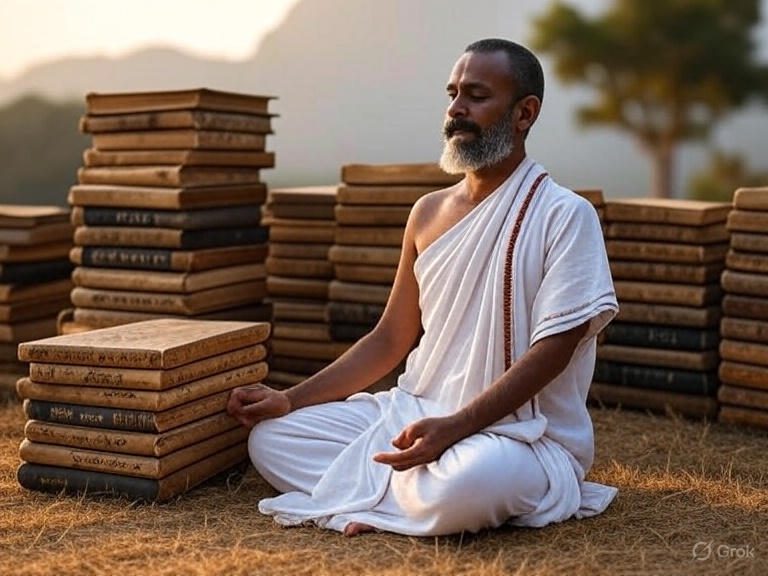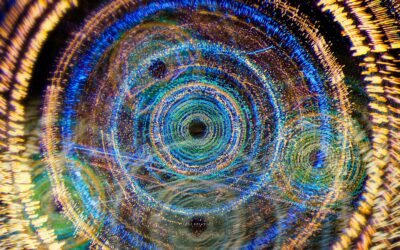The Vedas, the oldest Sanskrit scriptures and foundation of the Hindu philosophical tradition, present meditation as a unique and central discipline for attaining physical, mental, and spiritual health, longevity, and self-realization. Vedic texts offer varied perspectives on meditation’s curative properties, echoing its role in healing, stress reduction, enhancing longevity, and unlocking states of awareness that are unique compared to other ancient traditions. Below is a comprehensive exploration of what the Vedas articulate on this subject, bolstered by direct quotes and modern scholarly interpretation.
Vedic Definition and Perspectives on Meditation
The Vedas view meditation (“Dhyana”) primarily as a process to connect with the deep inner Self rather than as a mere mental exercise. In Rigveda, meditation is referred to as a means of quieting the mind’s disturbances, thereby realizing one’s unity with the divine and universal consciousness. Unlike meditation in some traditions, Vedic meditation often centers on mantra and inner silence, accessible to lay practitioners as well as monks.
Meditation and Curative Properties
Stress Relief and Psychological Well-being
Meditation as taught in the Vedas provides profound therapeutic benefits: reducing stress, alleviating anxiety, and preventing the cycle of stress-related illnesses. Transcendental (Vedic) meditation specifically works by calming the autonomic nervous system and altering one’s perception and reaction to stressors. The Atharva Veda asks for preservation of vital faculties—speech, breath, sight, hearing, youth, and strength—through spiritual practice:

“May the power of speech remain in my mouth, may the vital air ever exist in my nostrils, may the power of sight ever exist in my eye, … let my arms possess much strength.”
— Atharva Veda
Curative Impact on Chronic and Lifestyle Diseases
Vedic meditation is documented to lower blood pressure, improve sleep, regulate inflammation, and strengthen resistance to chronic conditions by stimulating deep rest and resetting stress chemistry. The body “purifies, rebalances, heals and restructures” at a rate several times deeper than ordinary sleep during meditation practice, catalyzing the regeneration of physical tissues.
Cognitive Improvements
The Vedas claim that meditation “sharpens the senses and the mind”—Atharva Veda highlights prayer and meditation as ways to sharpen the senses and bring peace. Rigveda and Samaveda mention the improvement of memory, working capacity, and mental clarity. Modern research reiterates these effects, citing improved hippocampal function, hemispheric coherence, and thicker corpus callosum in long-term meditators.
Meditation and Longevity
Longevity is not only a biological concept in the Vedas—it is tied to spiritual vitality and mental clarity. The concept of “immortality” in Rigveda is metaphorical for spiritual eternality and inner transformation:
“There was neither death nor immortality then. … That alone breathed windless by its own power. Other than that there was not anything else.”
— Rig Veda
Contemporary studies find that Vedic meditators have a biological age typically 12 years younger than control groups, presumably due to reduced chronic stress, better sleep, optimized brain chemistry, and deeper cellular regeneration.
Uniqueness of Vedic Meditation
The Mantra and Effortlessness
Vedic meditation uses a unique “mantra” technique—a simple, natural, and effortless mental vehicle guiding the mind to self-transcendence. Rigveda, Samaveda, Yajurveda, and Atharvaveda all refer to the power of sound (mantra) in awakening inner awareness and facilitating healing.
Accessibility for Household Life
Unlike rigorous ascetic disciplines, Vedic meditation is tailored for regular people, making self-realization and mental peace accessible to those with family and worldly responsibilities, not just to monks or renunciates.
Spiritual Unity and Transformative Awareness
The Vedas consistently illustrate that meditation not only brings healing and longevity but also introduces practitioners to a state of “contentless awareness”—an experience of unity and self-realization:
“He becomes a lover of all, a part and parcel of the Universal Joy. … The experience of unity is the fulfillment of human endeavors. The mysteries of life are revealed.”
— Rigveda/Yajurveda
Direct Vedic Quotes on Meditation and Healing
- “The human body is the temple of God. One who kindles the light of awareness within gets true light. … The experience of unity is the fulfillment of human endeavors. The mysteries of life are revealed.”
— Rigveda - “May the divine fountain of eternal grace and joy enter your soul. … Bless us with a divine voice… to sing songs of Love to you.”
— Rigveda - “Through knowledge one obtains immortality.”
— Rigveda/Katha Upanishad - “Let noble thoughts come to us from every side.”
— Rigveda 1.89.1 - “These five senses with the mind as sixth which abide in my heart are made sharp by means of prayer. By which all the awful works are done, may we attain peace by them.”
— Atharva Veda
Modern Scholarly Opinions (Vedas and Meditation)
Recent research supports the Vedic teachings, highlighting deeper rest, improved learning, hormonal balance, and slower aging as benefits of Vedic meditation. It is described as a holistic approach integrating mind, body, and spirit, aligning with Vedic concepts of health.
Sources and Citations
- Rigveda, Samaveda, Yajurveda, Atharvaveda texts (various translated quotes)
- “Scientific Benefits of Vedic Meditation,” biyome.com.au
- “Vedic Meditation: A Stress Relief Tool,” healthvision.in
- “Meditation: Process and Effects – PMC,” Sharma 2015
- “Fuelled by Form: Jillian Lavender on How Vedic Meditation Can Transform Your Life,” formnutrition.com
- “Vedic Way of Life,” kesariyafarm.com
- “What Is Vedic Meditation and How Can It Transform Your Life?” megreynolds.com
- “Meditate with Susan: Vedic Meditation,” meditatewithsusan.com
- Swami Vivekananda Veda Quotes, vedicheritage.gov.in
For anyone seeking to understand “vedas and meditation,” the Vedas offer a multi-layered view: meditation is unique for its accessibility and transformative depth, curative in mental and physical domains, and a foundational practice for health, longevity, and spiritual unity.
Bibliography os Sanskrit verses

The Vedas contain profound Sanskrit verses on meditation (Dhyāna) and its curative and transformative properties, emphasizing healing, longevity, and spiritual uniqueness. Below are Vedic quotes in Sanskrit, each accompanied by its English translation, illuminating what the Vedas say about meditation and its benefits.
Rigveda
On Illumination and Wisdom
Sanskrit:
“ॐ भूर् भुवः स्वः तत् सभ्यः सवितुर्वरेण्यं भर्गो देवस्य धीमहि। धियो यो नः प्रचोदयात्।”
(Om bhūr bhuvaḥ svaḥ tat savitur vareṇyaṃ bhargo devasya dhīmahi dhiyo yo naḥ prachodayāt)
Translation:
Let us meditate on that excellent glory of the divine Light (Savitur, the Sun). May He stimulate our understandings.
On Healing and Wellbeing
Sanskrit:
“आ नो भद्राः क्रतवो यन्तु विश्वतः।”
(ā no bhadrāḥ kratavo yantu viśvataḥ — Rigveda 1.89.1)
Translation:
May noble thoughts come to us from every side.
Atharva Veda
On Health and Longevity
Sanskrit:
“वाचं मनोर्यस्य मुखे भवति श्रुतमुत यत्। यः पश्यति स न जीवेद्यः केवलं शृणोति॥”
(vācaṃ manoryasya mukhe bhavati śrutamuta yat | yaḥ paśyati sa na jīvedyaḥ kevalaṃ śṛṇoti)
Translation:
May the power of speech remain in my mouth, may the vital air ever exist in my nostrils, may the power of sight ever exist in my eye.
Yajurveda
On Calmness and Detachment
Sanskrit:
“समानी वा अकुटिः समाना हृदयानि वा।”
(samānī vā akuṭiḥ samānā hṛdayāni vā — Yajurveda 36.3)
Translation:
May our intentions and hearts be alike.
General Vedic Wisdom on Dhyāna
On Self-Control and Equanimity
Sanskrit:
“योगश्चित्तवृत्तिनिरोधः।”
(yogaḥ citta-vṛtti-nirodhaḥ)
Translation:
Yoga is the restraint of the fluctuations of the mind.
On Excellence in Meditation (Karma and Dhyāna)
Sanskrit:
“योगः कर्मसु कौशलम्।”
(yogaḥ karmasu kauśalam)
Translation:
Excellence in action is yoga.
Vedic Insights on Curative Properties
On Overcoming Suffering
Sanskrit:
“तं विद्याद् दुःखसंयोगवियोगं योगसंज्ञितम्। स निश्चयेन योक्तव्यो योगोऽनिर्विण्णचेतसा।।”
(taṃ vidyād duḥkhasaṃyogaviyogaṃ yoga-saṃjñitam, sa niścayena yoktavyo yogo ‘nirviṇṇa-cetasā)
Translation:
Let it be known: the severance from the union-with-pain is YOGA. This YOGA should be practised with determination and a steady, undespairing mind.
Uniqueness and Longevity
On Infinitude and Shelter of Life
Sanskrit:
“जीवनं अनन्तं नृत्यति यदि नाश्रयो याति।”
(jīvanaṃ anantaṃ nṛtyati yadi nāśrayo yāti)
Translation:
Life is infinite; it dances unless it finds its shelter.
Sources
- Rigveda
- Atharva Veda
- Yajurveda
- General Sanskrit Shlokas
- Bhagavad Gita (for extended yogic wisdom)
- Resanskrit quotes collection
- Superprof Sanskrit quotes
- Sanskritagain compilation
The Vedas and Sanskrit tradition describe meditation as a route to physical healing, mental clarity, longevity, and ultimately, transcendence and unity with the divine, making it uniquely holistic among all ancient philosophies
Which specific Vedic or Upanishadic verses discuss meditation and healing
Several specific Vedic and Upanishadic verses explicitly discuss meditation (dhyāna) and healing, covering both physical and spiritual restoration.
Vedic Verses
Gayatri Mantra — Rig Veda 3.62.10
Sanskrit:
“ॐ भूर् भुवः स्वः तत् सवितुर्वरेण्यं भर्गो देवस्य धीमहि। धियो यो नः प्रचोदयात्।”
(Om bhūr bhuvaḥ svaḥ tat savitur vareṇyaṃ bhargo devasya dhīmahi dhiyo yo naḥ prachodayāt)
Translation:
Let us meditate on the supreme light of the divine creator. May he enlighten our intellect.
This mantra is said to purify the mind and nurture inner healing.
Maha Mrityunjaya Mantra — Rig Veda 7.59.12
Sanskrit:
“ॐ त्र्यम्बकं यजामहे सुगन्धिं पुष्टिवर्धनम्। उर्वारुकमिव बन्धनान्मृत्योर्मुक्षीय मामृतात्।”
(Om tryambakaṃ yajāmahe sugandhiṃ puṣṭi-vardhanam urvārukam iva bandhanān mṛtyor mukṣīya mā’mṛtāt)
Translation:
We worship the three-eyed Lord who nourishes and rejuvenates. May he liberate us from bondage to death as a cucumber is separated from its stalk, and grant us immortality.
This verse is renowned for its healing potency and is often chanted for physical and emotional well-being.
Atharva Veda on Healing
Atharva Veda contains numerous hymns and mantras invoking healing from diseases, protection, and restoration of health using herbs, rituals, and divine invocation.
Example (Sanskrit):
“ओषधयः पृथिव्यः यान्तु।”
(Oṣadhayaḥ pṛthivyaḥ yāntu)
Translation:
May the herbs of the earth bring healing.
Many such hymns focus on treating ailments and strengthening vital faculties.
Upanishadic Verses
Taittiriya Upanishad/Yajur Veda — Shanti Mantra
Sanskrit:
“ॐ सह नाववतु। सह नौ भुनक्तु। सह वीर्यं करवावहै। तेजस्विनावधीतमस्तु मा विद्विषावहै। ॐ शान्तिः शान्तिः शान्तिः।”
Translation:
Om. May we be protected together, may we be nourished together, may we work together with great energy, may our study be enlightening, may we not quarrel.
This mantra establishes a peaceful, harmonious mental environment. It’s traditionally recited before study or meditation for healing and clarity.
Mundaka Upanishad 2.2.3–2.2.4
Sanskrit:
“ओम् इत्येतद् ब्रह्म, ओम् हि व्रणीमहि, ओम् हि ब्रह्म, ओम् हि सर्वं…”
(Om ity etad brahma, Om hi vraṇīmahi…)
Translation:
Om is the bow, the mind the arrow, and Brahman the target; one should meditate on this, merging as the arrow becomes one with the target.
Meditation using Om is presented as the key to spiritual healing and liberation from suffering.
Chandogya Upanishad 1.3.1
Sanskrit:
“उद्गीथमुपासीत।”
(Udgīthaṃ upāsīta)
Translation:
One should meditate on the Udgitha (the sacred sound Om) as the sun, who gives warmth and removes darkness and fear.
Here, meditation is directly associated with overcoming darkness (ignorance and suffering), achieving clarity and health.
Brihadaranyaka Upanishad — Meditation on Vital Breath
Sanskrit:
“प्राणो वै क्षत्रम्। प्राणो हि क्षत्रम्… त्रायते…”
(prāṇo vai kṣatram, prāṇo hi kṣatram… trāyate)
Translation:
The vital force (prana) is the Kshatra (protection). It protects the body from wounds.
This passage teaches that meditation on prana leads to healing — both physical defense and spiritual realization.
Svetasvatara Upanishad 2.12–15
Describes meditation as the cause of joy, supreme bliss, and control of the senses, which ultimately delivers one from all suffering.
Summary Table — Key Verses
| Scripture | Sanskrit Verse (excerpt) | Theme | Healing/ Meditation Role | Citation |
| Rig Veda 3.62.10 | तत्त् सवितुर्वरेण्यं… धीमहि | Meditative illumination | Mental clarity, spiritual energy | |
| Rig Veda 7.59.12 | त्र्यम्बकं यजामहे…मृत्योर्मुक्षीय मामृतात् | Life & healing | Physical/emotional healing | |
| Atharva Veda | ओषधयः पृथिव्यः यान्तु | Herbal/ holistic healing | Ailment relief, vital force | |
| Taittiriya Upanishad | सह नाववतु… | Shanti (peace) mantra | Peace, energy, clarity of mind | |
| Mundaka Upanishad 2.2.4 | ओम् इत्येतद् ब्रह्म… | Meditation on Om | Spiritual healing, unity | |
| Chandogya Upanishad 1.3 | उद्गीथमुपासीत | Meditation on Udgitha | Remove darkness, gain strength | |
| Brihadaranyaka Upanishad | प्राणो वै क्षत्रम् | Meditation on prana | Protect/heal body and soul | |
| Svetasvatara Upanishad | (Meditation verses) | Joy/bliss from meditation | Liberation from suffering |
These verses show that both the Vedas and Upanishads deeply support meditation as a practical and spiritual tool for healing, inner peace, longevity, and self-realization.





0 Comments